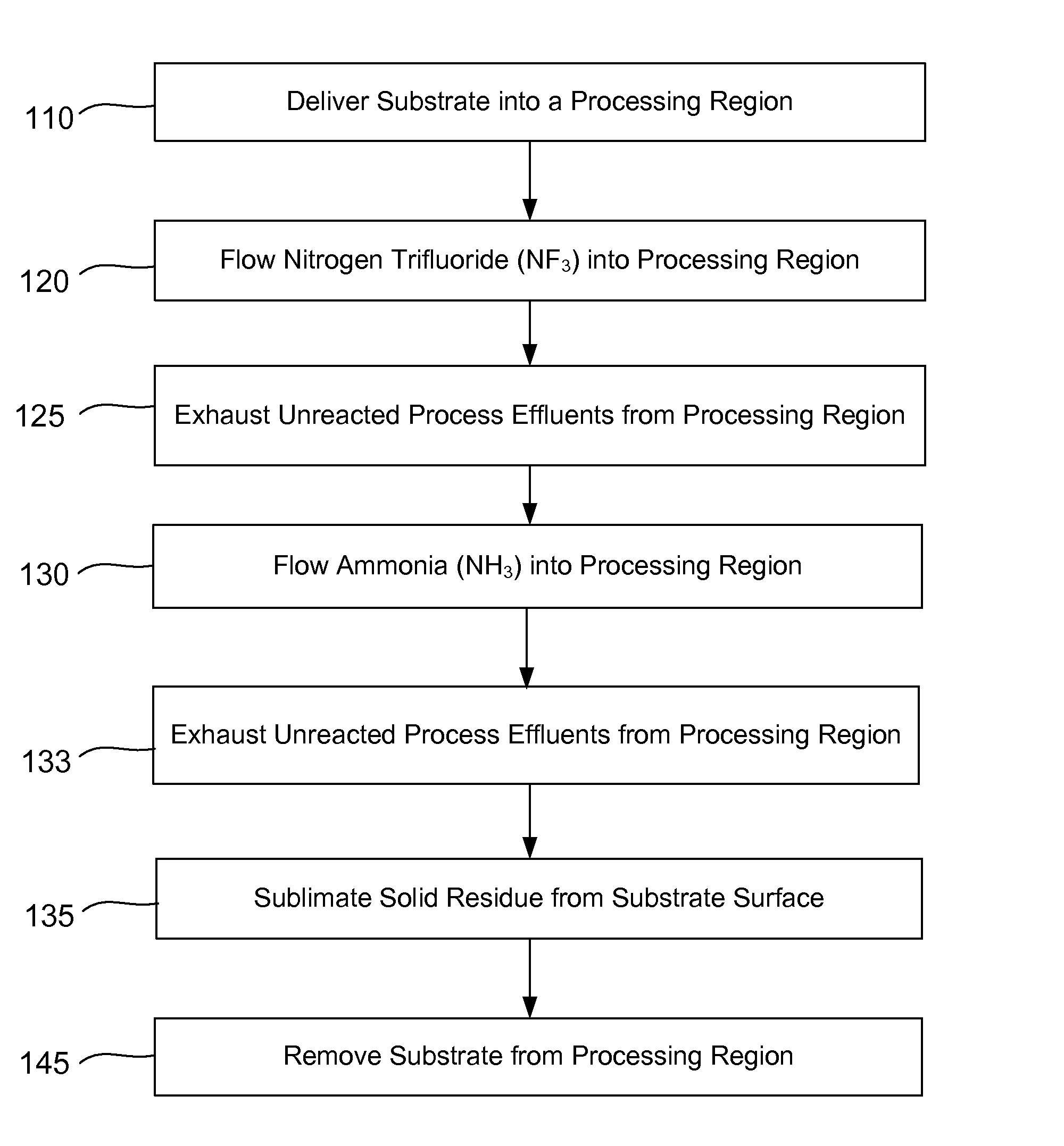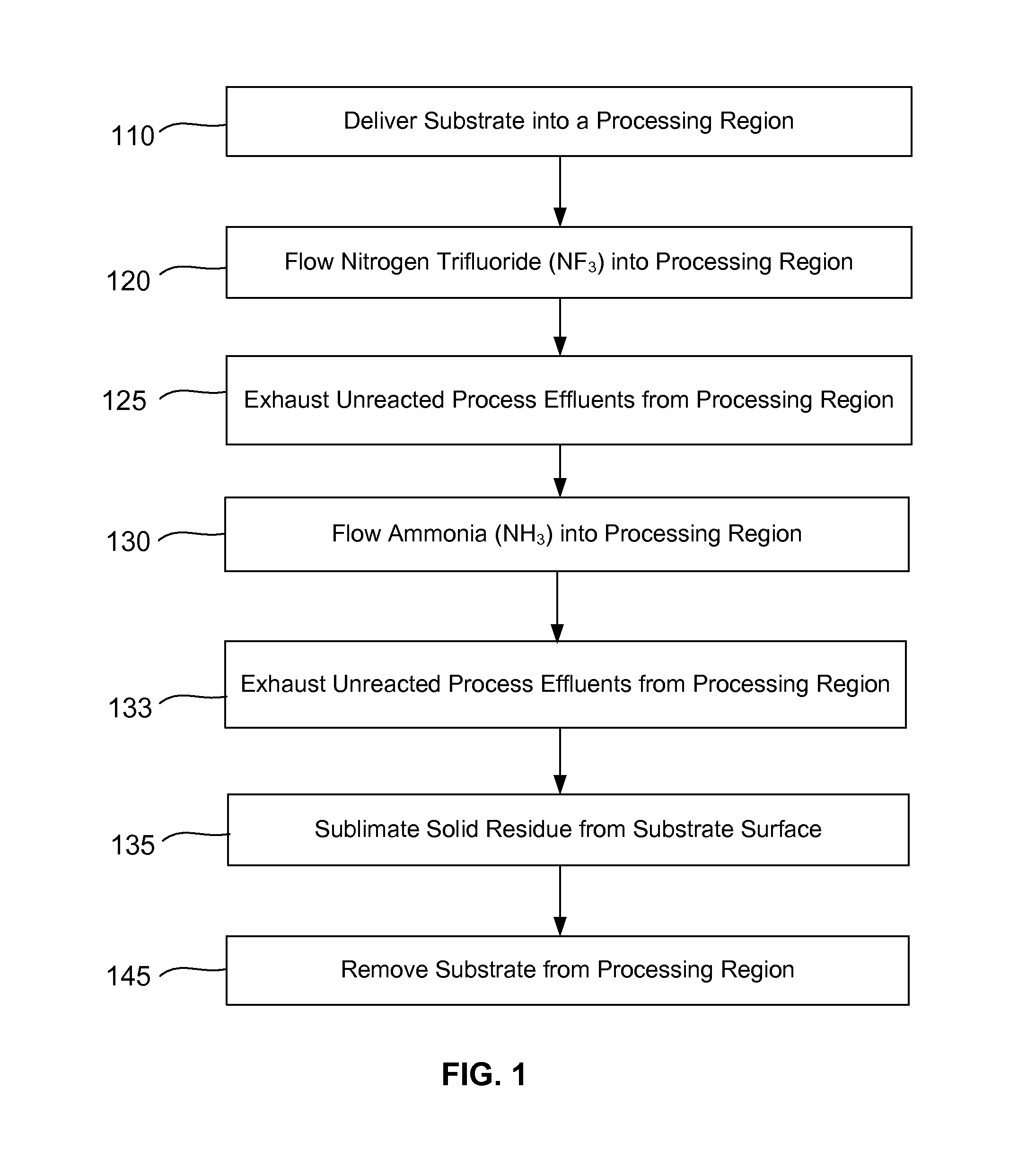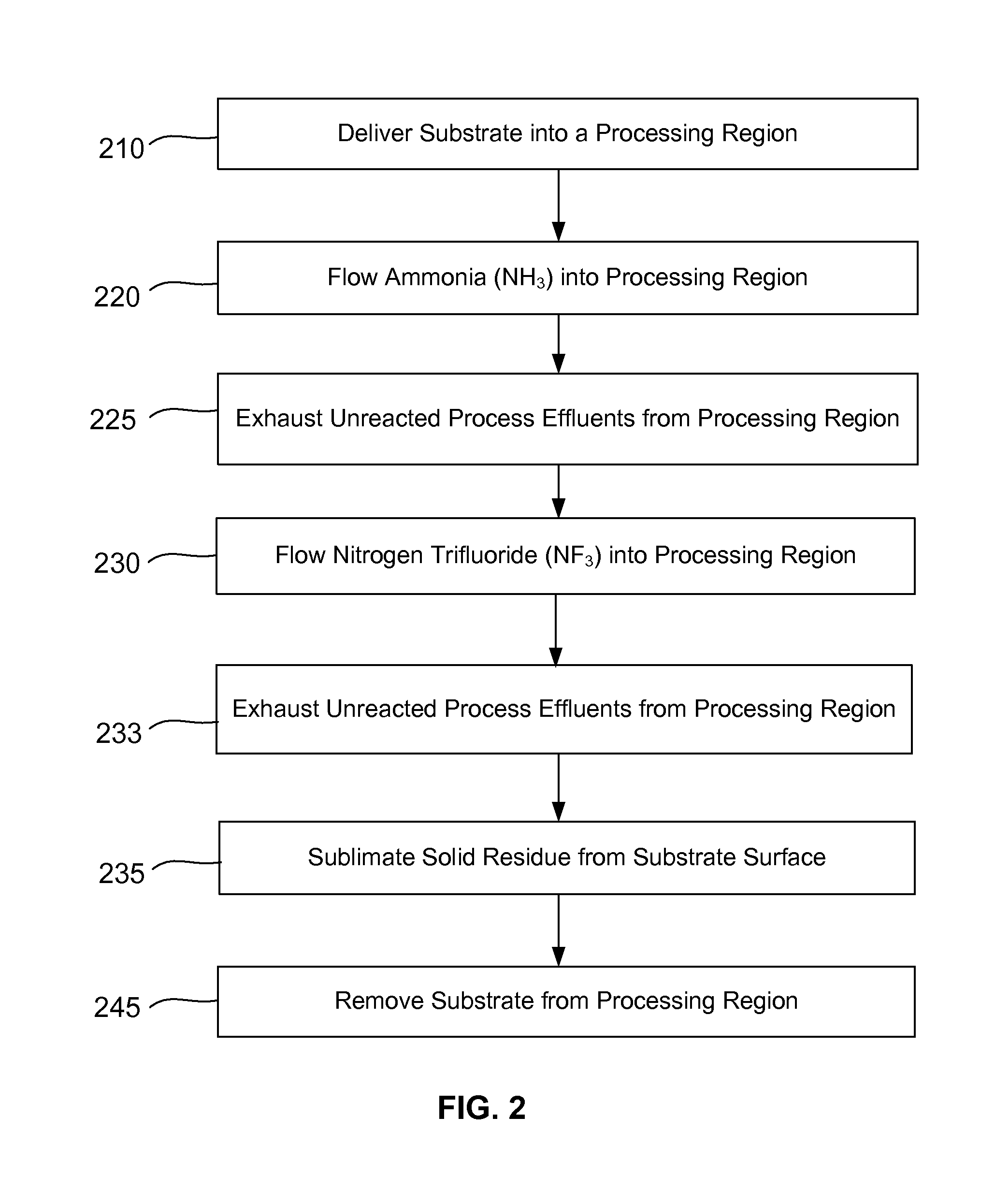Conformal oxide dry etch
- Summary
- Abstract
- Description
- Claims
- Application Information
AI Technical Summary
Benefits of technology
Problems solved by technology
Method used
Image
Examples
Embodiment Construction
[0018]A method of etching silicon oxide from a trench is described which allows more homogeneous etch rates up and down the sides of the trench. One disclosed method includes a sequential introduction of (1) a hydrogen-containing precursor and then (2) a fluorine-containing precursor into a substrate processing region. The temperature of the substrate is low during each of the two steps in order to allow the reaction to proceed and form solid residue by-product. A second disclosed method reverses the order of steps (1) and (2) but still forms solid residue by-product. The solid residue by-product is removed by raising the temperature in a subsequent sublimation step regardless of the order of the two steps.
[0019]Siconi™ etch processes are an example of a dry etch process and have used a hydrogen source such as ammonia (NH3) in combination with a fluorine source such as nitrogen trifluoride (NF3). The combination flows into a remote plasma system (RPS) and the plasma effluents create...
PUM
| Property | Measurement | Unit |
|---|---|---|
| Temperature | aaaaa | aaaaa |
| Sublimation point | aaaaa | aaaaa |
| Thickness | aaaaa | aaaaa |
Abstract
Description
Claims
Application Information
 Login to View More
Login to View More - R&D
- Intellectual Property
- Life Sciences
- Materials
- Tech Scout
- Unparalleled Data Quality
- Higher Quality Content
- 60% Fewer Hallucinations
Browse by: Latest US Patents, China's latest patents, Technical Efficacy Thesaurus, Application Domain, Technology Topic, Popular Technical Reports.
© 2025 PatSnap. All rights reserved.Legal|Privacy policy|Modern Slavery Act Transparency Statement|Sitemap|About US| Contact US: help@patsnap.com



